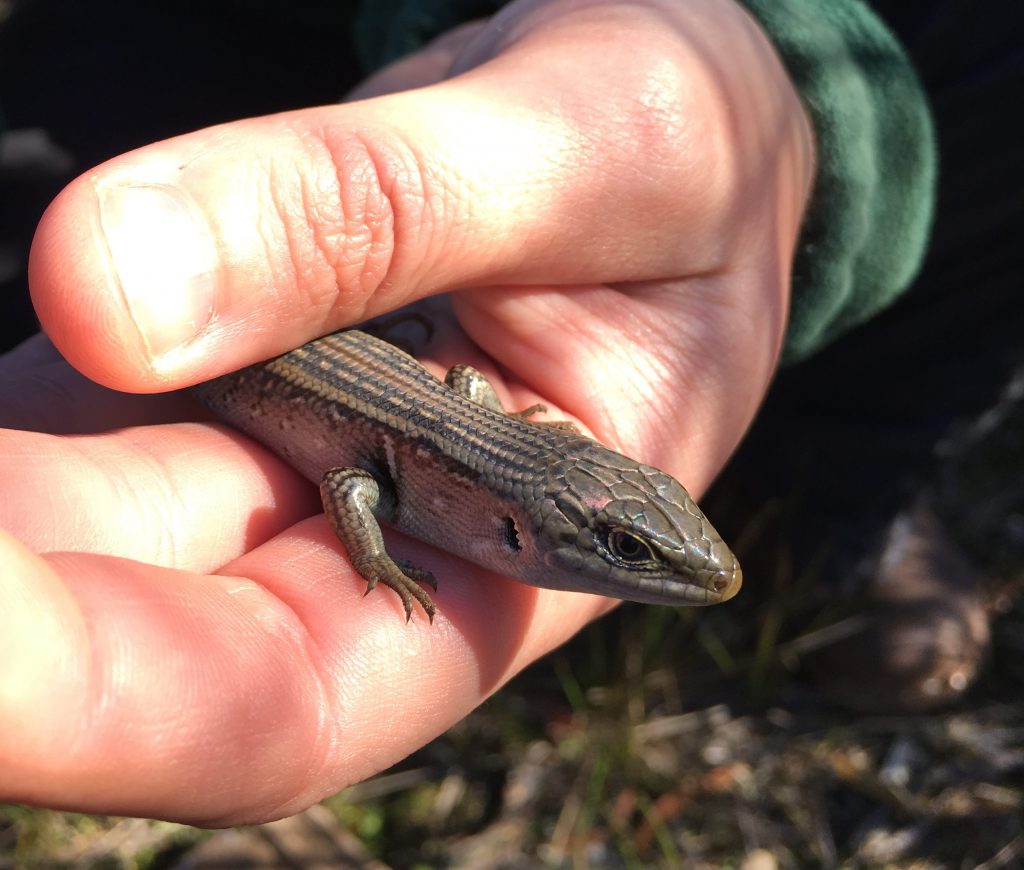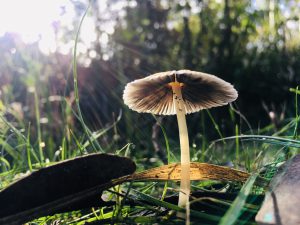Kurrawonga’s two-tailed lizard and other exciting discoveries!
Introducing Kurrawonga’s two-tailed resident! As a self-defence strategy to distract predators, most lizards can drop their tails when hit or stressed. The dropped tail will continue wriggling to catch the predator’s attention and allow for the lizard’s speedy escape. This self-amputation mechanism is also known as autotomy.
This White’s Skink (Liopholis whitii) was possibly able to drop only part of its tail, resulting in a new one regrowing while the old part was still attached! However a lizard cannot regrow new bony vertebrae, so a regenerated tail will instead contain cartilage.
One of the key features we used to identify this skink was the scale pattern on top of its head. On the head of the White’s Skink (below, left), the pariental scales (shown in green) are separated by the interpariental scale, unlike the lizard on the right whose pariental scales are in contact.

Left: Pariental scales separated by interpariental. Right: Pariental scales in contact behind interpariental.
However just like the name suggests, the most distinguishing feature of White’s Skink is the white ring surrounding the lizard’s eye!
Kurrawonga has been bursting with colour. A large array of fungi and orchids were spotted during recent Saturday Working Bee surveys, including the Veined Helmet-Orchid (pictured below) which has just begun to flower. Other exciting finds have been the Amber Jelly (Exidia recisa), Dark Vegetable Caterpillar (Cordyceps gunnii) and the tiny cups of the Torrendiella eucalypti (pictured below).
- Amber Jelly (Exidia recisa)
- Coral fungi (Ramaria)
- Dark Vegetable Caterpillar (Cordyceps gunnii)
- Fletchamia
- Torrendiella eucalypti
- Salamander Skink (Anepischetosia maccoyi)
- Pleated Inkcap (Parasola plicatilis)
- Veined Helmet-orchid (Corybas diemenicus)
- Splitgill fungi (Schizophyllum commune)
Kurrawonga’s camera traps have been giving us a great insight into the daily activities of residents. Check out the beautiful Brown Goshawk (Accipiter fasciatus) below, captured having a drink and a splash at the water bath.
The next Kurrawonga Open Day is on Saturday 10th August from 9.00 am to 3.00 pm. Anyone is welcome to explore and enjoy the property at their leisure during this time. For more information contact Nicole at












